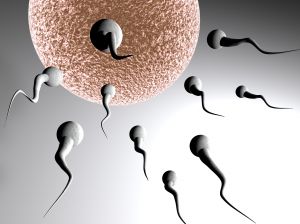A new study by chemists from the University of Warwick (Warwick) in the United Kingdom challenges a pharmacological rule that has been valid for a hundred years that refers to the rate of penetration of key substances through cell walls

The new findings of the researchers from the University of Warwick imply that the actual rate of transition can be up to a hundred times slower than expected according to "Overton's Rule", which has existed for a hundred years. These findings could have far-reaching effects on the development and testing of many future drugs.
Overton's rule states that the better a substance dissolves in fats (lipids), the more easily it can penetrate the walls of the biological cell. The rule was first established in 1890 by Ernst Oberton from the University of Zurich. He declared that substances that dissolve in lipids are able to penetrate more easily into the cell than substances that dissolve in water. He then developed an equation capable of predicting the beat rate. One of the key factors of this equation is the constant K, which defines the lipophilicity - the property of attraction to oil - of any substance. The greater the value of this constant, the greater the rate of penetration of the material through the cell walls. For over a hundred years, medicinal chemists have relied on this ratio to plan their research and clinical trials.
A team of electrochemists from the university used a combination of a confocal microscope and an ultra-microelectrode to examine what really happens when a chemical substance crosses the cell walls. Developments in technology allowed them to place an ultra-microelectrode very close to the borders of the cell membrane (at a distance of 20 microns - about a third of the thickness of a human hair) where it was used to flow a variety of acids that should penetrate the cell with relative ease. These techniques made it possible to directly examine and measure each and every stage during the pupation. Previous studies were unable to reach such a level of detail and precision and usually required artificial mixing of the solutions.
The results amazed the researchers. Although the acids did pulsate through the lipid membrane, they did so at a rate that was dramatically contrary to the law's predictions, that is, the most lipophilic compounds pulsated at the lowest rate. The researchers examined four acids - acetic, butanoic, valeric and hexanoic - that contained increasingly long carbon chains. The longer the carbon chain, the easier it is for the substance to dissolve in lipids, and therefore, according to Overton's rule, it will cross the lipid membrane of the cell faster. In fact, the researchers discovered that for these four particular acids, the exact opposite phenomenon occurs - the easier it is for the acid to dissolve in fat, the slower its rate of penetration into the cell will be.
The research team will now use their technique to examine the pulsation rate of a variety of other substances into the cell interior. The lead researcher in this study, Professor Patrick Unwin, says: "This was a surprising and fascinating finding. Our direct observation, apparently, completely refutes a basic law that has stood the test of time for many years. We will now conduct experiments with a variety of other materials and different techniques to understand the molecular basis of our observations. If our findings are indeed confirmed, the textbooks will have to be rewritten to correct a law that has been relied on for over a hundred years. Advanced techniques, such as the one we have developed, will be able to provide clearer insights regarding the mechanism of action of diverse drugs, insights which will be of significant interest for the future development of innovative drugs."

9 תגובות
Gentlemen, the law of gravity has been disproved, you are welcome to spread your hands and jump out of the window to fly a little.
Laws were invented to be broken
Great research. It just shows us how true our scientific truths really are. Always take the exact science Ltd.
Of course, the hundred-year-old absolute truth must be corrected and better technology implemented. It must be remembered that flutter is also a function of weight and the heavier you are, the more stationary you are, therefore the ability to normalize the results is of utmost importance. True, in real life where it is necessary to inject medicine into the cell the absolute time is the determining factor and all theories are not important. But it is possible that there is some truth in the original law as well - on the condition that the weight is normalized to the rate of diffusion (or osmosis in this case)
Greetings friends
This is not the first time that some law or rule is invoked, and it turns out after a while that it is wrong. The question is how many of the "modern" laws will be disproved in the future
The cool:
In the end it turns out that it wasn't even a correct rule of thumb because all the tested examples contradict it.
It was someone's guess that everyone thought was law because they couldn't test it and in the end it turned out to be law - but wrong.
I didn't understand if what was disproved was a law or a rule of thumb..
The consequences are more effective drugs with a better penetration rate.
A very surprising find. I wonder what the practical implications of this are.